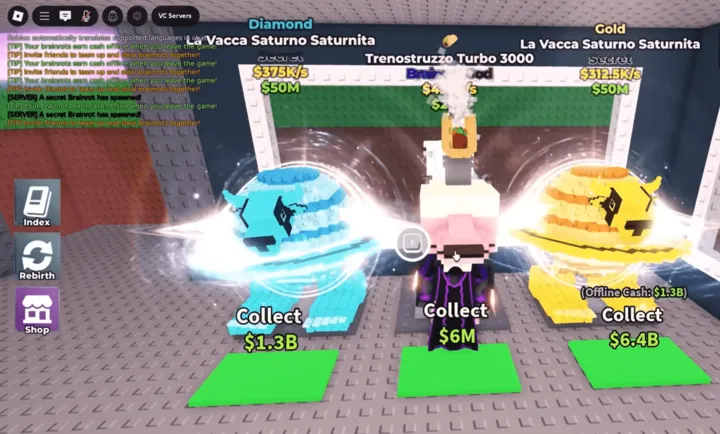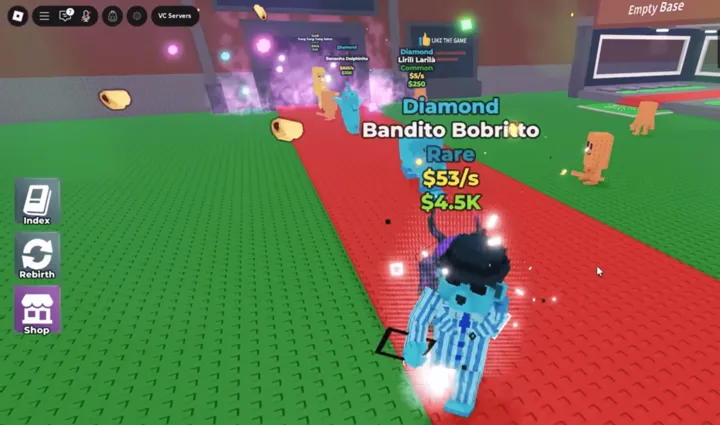Steal a Brainrot has quickly become one of the most intriguing multiplayer deception games of recent years. Beneath its chaotic surface lies a carefully balanced system of stealth, strategy, and psychological trickery. Players who succeed in this game do so not by luck, but by understanding how to approach each stage with patience and precision.
This guide will explore how to master the game step by step. We will move from the opening disguises to the tense late-game standoffs, highlighting specific strategies that separate expert players from beginners. By the end, you will understand how to think like a predator while avoiding becoming prey yourself.
Early Game: How to Disguise Yourself Effectively
The first few minutes of Steal a Brainrot are all about creating the right foundation. If you fail to blend into the environment early on, suspicion will follow you for the rest of the match. The most common mistake beginners make is overacting. They try too hard to “act natural,” which ironically makes them stand out.

The best way to disguise yourself is to study how NPCs move. NPCs follow predictable paths and behaviors—walking in smooth lines, occasionally pausing, or reacting slightly to sounds. By mimicking these movements, you become nearly invisible. Resist the temptation to sprint unless absolutely necessary. Also, never interact with objectives immediately; rushing in too fast makes you an easy target. Instead, spend the early game watching and adapting.
Mid-Game: How to Steal Without Drawing Attention
The middle stage of the game is when the real action begins. Objectives start to matter more, and players grow bolder. This is when a strong disguise must be paired with perfect timing. Every objective interaction has a risk window, and the key is to act only when you know other players are distracted.
Positioning is also crucial. Stand at angles where your actions are naturally shielded from view by walls, objects, or groups of NPCs. If you are completing an objective, know your escape route beforehand. The smartest players complete an action, then immediately walk away as if nothing happened. Blending back into the crowd is the difference between survival and exposure.
How to Use Abilities at the Right Moment
Abilities in Steal a Brainrot add an extra layer of depth, but using them carelessly will mark you as suspicious. The golden rule is that abilities should support stealth, not replace it. Think of them as tools for recovery, not as shortcuts.

For example, the Smoke Screen works best after you finish an objective—it covers your escape rather than starting your move. Disguise Swap is most effective in the late game, when paranoia runs high and players are scrutinizing every detail. Mind Trick can be used to misdirect or distract when you need others to look away from your true actions. The smartest players often hold abilities for long stretches, waiting for that perfect opportunity.
How to Read Other Players’ Intentions
One of the most underrated skills in Steal a Brainrot is learning to read the room. Good players don’t just focus on their own path; they constantly watch for clues about what others are doing. Suspicious behavior often includes breaking NPC patterns. For example, if a player suddenly changes direction when noticed or lingers near objectives without completing them, it’s a red flag.
Psychological tells are equally important. When accused, many players panic. Their movements become jittery, or they may defend themselves too aggressively in chat or voice. Experienced players use these reactions as confirmation. By learning to read intentions, you gain a huge advantage—you’ll know who to frame, who to avoid, and when to strike.
How to Handle Confrontations Without Panicking
Eventually, you will be accused. In these moments, your reaction can determine whether you survive or fail. The worst thing you can do is panic and run immediately. Running makes you appear guilty, even if you aren’t.
Instead, blend into the crowd of suspicion. Calmly deflect accusations by pointing out odd behavior from others. Confidence is key—if you appear too desperate, others will sense fear. The best tactic is to remain still and collected, forcing others to question their own certainty. In some cases, silence is even more powerful than defense, as it allows paranoia to spread naturally among other players.
Late Game: How to Stay Undetected Under Pressure
The late game is when matches grow most intense. With fewer players left, every movement is under heavy scrutiny. This is when patience becomes your greatest weapon. Instead of rushing objectives, wait. Let others grow paranoid and make mistakes.

Disguise management is especially important now. Using a disguise swap at the right time can reset suspicion, but only if you are certain nobody is watching. Avoid unnecessary risks and focus on positioning. In late game, small errors are magnified, so every step must be calculated. Remember, it is often better to let others eliminate each other than to expose yourself.
How to Outsmart Teams and Collaborators
Sometimes, players work together to try to corner suspects. This can be one of the hardest challenges to overcome. The key is to create division within the team. If you can make them doubt each other, their alliance will crumble.
One method is distraction. Lead one collaborator away with suspicious movement while the other is focused elsewhere. Another is manipulation—bait them into attacking an innocent by setting traps or faking suspicious behavior near a non-suspect. Once they make a mistake, their credibility collapses, and you gain the freedom to move again. Exploiting trust is one of the most advanced and rewarding strategies in Steal a Brainrot.
Advanced Tricks: How to Manipulate the Game’s Chaos
Steal a Brainrot thrives on unpredictability. Skilled players know how to use this chaos to their advantage. Creating small disturbances can distract others from your true objectives. For example, triggering noise in one area while you slip into another is a highly effective tactic.
Controlled mistakes can also be used. Sometimes pretending to act suspiciously draws attention away from your real moves. For instance, lingering briefly near an objective without completing it can frame another player who finishes it later. This level of manipulation separates the average from the elite.
How to Transition from Survival to Victory
The final stage of the game is about transforming all the stealth, deception, and survival you’ve practiced into victory. By now, you must balance risk-taking with discipline. Aggression at the wrong moment can undo all your careful work.

The smartest approach is to let others act first. Use their mistakes to clear your path. When you finally move in for the last objective or elimination, do so with confidence and precision. Victory in Steal a Brainrot is not about rushing—it is about playing the long game with patience, adaptability, and calculated risks.
Conclusion
Mastering Steal a Brainrot requires more than just mechanical skill. It is about reading others, managing your own presence, and knowing when to act and when to wait. From disguises in the opening minutes to manipulations in the late game, every decision matters.
If you focus on blending in, reading intentions, and exploiting chaos, you will find yourself not only surviving longer but also consistently achieving victory. This game rewards patience, observation, and adaptability more than brute force. The more you learn to think like both predator and prey, the more unstoppable you will become.

















